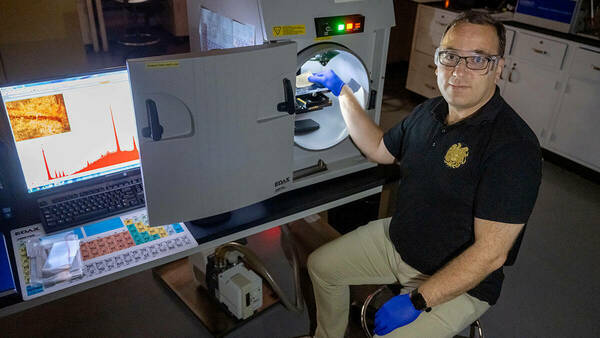
Although less than 50 years old, the lithium-ion battery has become indispensable, having been incorporated into thousands of essential products such as mobile phones, smartwatches, laptops and hybrid and electric vehicles.
As lithium-ion battery technology rapidly advanced in the two decades following its invention, electronics companies and car manufacturers increasingly recognized its potential for their products. Due to its ability to store a large amount of energy in a small, lightweight package compared to other types of batteries, lithium-ion batteries have become among the most common types of batteries used today, with their future use expected to grow even further.
This significant increase in lithium-ion battery usage has raised concerns about managing old, used batteries. These batteries contain toxic materials that can leach into the soil and water and pose fire risks in landfills and recycling facilities. Consequently, there is growing anxiety about the environmental damage that used lithium-ion batteries can cause. This issue is only expected to escalate as an increasing number of products, particularly electric vehicles, incorporate these batteries.
The environmental impact of spent lithium-ion batteries is not the only issue surrounding these batteries. There are also significant environmental concerns associated with mining the materials needed to produce them. These issues include extensive water usage, contamination of water supplies, greenhouse gas emissions, and the destruction of natural habitats. Additionally, most of these materials, such as cobalt, lithium and nickel, are not widely available in the U.S., making the country dependent on foreign suppliers.
Due to these issues, governments, battery manufacturers and electronics companies have been exploring ways to recycle used lithium-ion batteries over the past decade. However, because the industry is still in its infancy and recycling methods are inefficient and primitive, the overwhelming majority of used batteries today are not recycled. Consequently, new ones must be manufactured, bringing along all their associated concerns. The primary issues with current recycling methods include high energy consumption, the complexity of separating valuable materials and environmental hazards such as the release of toxins into the air.
Building on years of prior research, Khachatur Manukyan, a research associate professor at Notre Dame’s Nuclear Science Laboratory in the Department of Physics and Astronomy, is developing a promising new battery recycling method. This patent-pending process uses a chemical reaction that generates its own heat to regenerate the core materials in spent lithium-ion batteries. Manukyan claims this method restores used batteries' cathode-active materials to nearly their original capacity while significantly reducing external energy requirements—by up to 90 percent compared to traditional methods.
“We believe our new method is more efficient, environmentally friendly and cost-effective than current lithium-ion battery recycling techniques,” said Manukyan. “It also saves time, is safer, reduces the complexity of the process compared to the current standard and uses less energy and materials than what is used today. In essence, our method is a significant leap forward in recycling efficiency.”
Reclion, Inc., a new company based in South Bend, IN, has recently licensed Manukyan’s method from Notre Dame with the intent to commercialize it. Manukyan will serve as a scientific consultant for the company.
One of the first challenges the startup will address in its quest to commercialize this technology is how to scale Manukyan’s process. The method Manukyan developed and published is currently proven to work only in small quantities, measured in grams. For commercial success, however, the company will need to scale the process from gram scale to kilogram scale so that it can be used on an industrial level. Manukyan acknowledges the challenge but believes it can be overcome.
“As with most inventions developed in labs, scaling up our recycling process will take time and further research,” said Manukyan. “However, we are confident that within one or two years, the method will reach the scale needed to attract a commercial battery recycling partner and thus lead to the first commercial-scale use of our method.”
Manukyan says the Reclion team has high hopes for the company’s future. “If the electric vehicle market and other industries using lithium-ion batteries grow as projected, there will be a large number of batteries available for recycling,” he said. “Since our method is significantly better than current standards, we hope to capture a sizable portion of the rapidly growing battery recycling market and, more importantly, encourage electric vehicle manufacturers and other heavy users of lithium-ion batteries to use recycled batteries over new ones whenever possible. This will reduce environmentally damaging mining, protect our soil, water and air and decrease reliance on imported materials. Achieving this would be a significant accomplishment for Reclion, Notre Dame, and, most importantly, the environment.”
Originally published by at ideacenter.nd.edu on July 30, 2024.